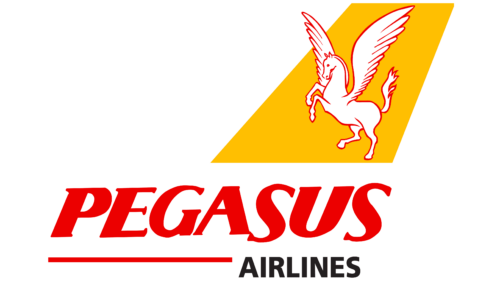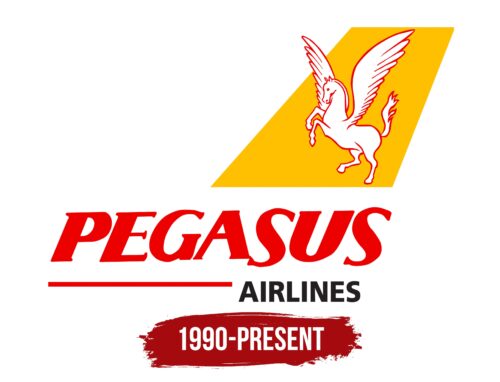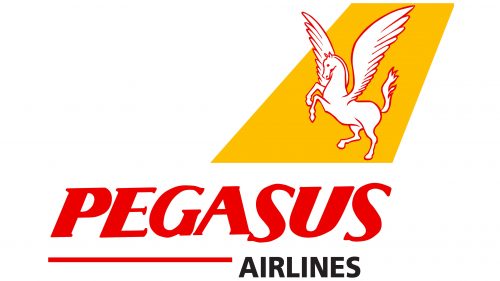Pegasus Airlines: Brand overview
Pegasus Airlines took flight on December 1, 1990, when it was established in Istanbul, Turkey, as a joint venture between Aer Lingus Group, Silkar Yatırım ve Insaat Organizasyonu A.S., and Net Holding A.S. This creation was a response to the burgeoning demand for charter flights, driven by Turkey’s booming tourism industry.
In May 1992, the company embarked on its first charter flight with a pair of Boeing 737-400 aircraft. Initially, the aviation firm focused on ferrying tourists from Europe to Turkey’s attractive holiday destinations.
Within a few years, the air operator expanded its fleet, bringing in more Boeing 737 aircraft to keep up with the increasing demand for charter services. This expansion allowed the airline to boost flight numbers and broaden its route map.
A major turning point came in 2005 when ESAS Holding, owned by the Sabancı family, acquired the brand. This acquisition marked a shift in strategy, steering the airline from charter services to a low-cost carrier model.
The transformation began in 2006 when the aviation firm launched scheduled domestic flights in Turkey. The inaugural flight from Istanbul to Izmir marked a significant step, positioning the company as a competitor in Turkey’s domestic aviation market.
By 2007, the airline had fully embraced the budget airline model, offering low base fares with additional charges for extra services. This business approach attracted a broader customer base and facilitated rapid growth in a competitive market.
The brand expanded internationally in 2008, initiating regular flights to several European cities. This expansion allowed the airline to tap into new markets and strengthen its global presence.
In 2011, the company made headlines with a massive order of 100 Airbus A320neo and A321neo aircraft, with options for an additional 25 planes. This order was the largest in Turkish civil aviation history and highlighted the airline’s ambitious expansion plans.
April 20, 2013, marked the air operator’s initial public offering (IPO) on the Istanbul Stock Exchange. This milestone provided the company with additional capital to fuel its growth strategy.
In 2014, the brand continued to grow its route network, adding new domestic and international destinations. The aviation firm focused on developing its Istanbul Sabiha Gökçen International Airport hub to support this expansion.
In 2016, the air operator introduced the Airbus A320neo to its fleet, becoming the first Turkish airline to operate this aircraft. The A320neo’s fuel efficiency and advanced features helped the company enhance operational efficiency and reduce fuel costs.
The airline kept modernizing its fleet in 2018 by adding the Airbus A321neo, which increased passenger capacity on popular routes and launched new long-haul services.
By 2019, the company had expanded its international network, adding new routes across Europe, the Middle East, and Central Asia. The airline bolstered its presence in the domestic market.
2020 presented significant challenges as the global aviation industry faced unprecedented disruptions. To navigate these turbulent times, the air operator focused on optimizing operations and adapting to evolving market conditions.
Meaning and History
What is Pegasus Airlines?
This leading Turkish low-cost airline, based in Istanbul, offers affordable flights across an extensive network of routes covering Turkey, Europe, the Middle East, North Africa, and Central Asia. The company operates modern, standardized narrow-body aircraft, primarily Boeing 737 and Airbus A320, configured to ensure efficient and economical operations.
1990 – today
The Pegasus Airlines logo vividly and dynamically conveys the company’s concept, using the symbolism of a mythical creature. At the time of the logo’s creation, the company aimed to strengthen its market position as a dynamic and reliable airline. The mythical Pegasus logo emphasizes the company’s uniqueness, ambitions, and commitment to providing high-quality services and ensuring comfortable and safe flights.
At the logo’s center is a white-winged horse emerging from a yellow trapezoidal element, symbolizing an aircraft’s tailplane. This image represents the mythological Pegasus, reflecting the airline’s name and embodying freedom, speed, and the power of flight.
Below the image of Pegasus is the word “PEGASUS” in bright red. The word is written in a unique, bold serif font, slanted to the right, highlighting dynamism and forward motion, consistent with the concept of flight. The slanted letters enhance the sense of movement and progress.
The yellow trapezoidal element draws attention to the winged horse and focuses the viewer on the logo. Yellow symbolizes energy, joy, and optimism. The red color of the word “PEGASUS” adds an element of passion and strength, reflecting the airline’s energy and power. The white color of Pegasus symbolizes purity and reliability, while the gray color of the word “AIRLINES” conveys modernity and seriousness.
The word “AIRLINES” is in a strict gray sans-serif font, giving the logo a modern and sleek look. This contrasts with the more elaborate elements of the logo, creating a balance between creativity and professionalism.





